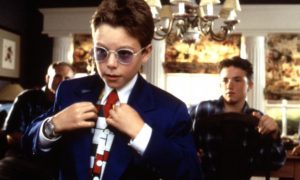Blake Snyder’s “Save the Cat” covers all the usual screenwriting suspects (topics). You’ll find advice on loglines, structure, beats, heroes and villains, character arcs, dialogue, subtext, troubleshooting, pitching and marketing.
Given that there are plenty of other helpful guides (I own more than a score), why has this book occupied the #1 screenwriting spot at Amazon for many years? I’ve come up with five good reasons:
- AUTHENTIC: There’s an old saying: “If you want to know the way, ask someone who’s been there.” This applies to Blake Snyder. In his short life (he was 51 when died in 2009), Snyder sold 13 spec scripts to Hollywood, and a couple of these were produced by major studios including Disney’s “Blank Check.” Thus, when he talks about an issue like struggling to get the plot points right, it’s not theoretical. Frequently he references his own efforts, and it comes across as real.
- HUMOROUS: Just as a spoonful of sugar helps the medicine go down, wit can make a book of screenwriting advice fun to read. Almost every page in “Save the Cat” reminds the reader of one of the book’s big ideas: movies must entertain people. A dull screenwriting book would definitely send the wrong message. Snyder, who specialized in comedy, was clearly an entertainer, and I believe he wanted us to follow in his footsteps.
- PRACTICAL: While screenwriters need big visions—captured in their stories’ themes—much of the work rests on answering specific questions such as: Who should be stronger—the hero or the villain? Like an old-fashioned car mechanic, Snyder liked to muck around in the basics. For example, he offers strongly held opinions about what should happen on specific pages, and how many beats there must be in a feature film. The book is extremely detailed, which makes it something of a cookbook. There’s even a well-developed glossary (the least funny part of the book but very helpful). This is definitely the sort of guide that screenwriters likely will turn to frequently as they move through their projects. An example would be tracking story beats using the “Blake Snyder Beat Sheet” (page 70).
- REINFORCING: Good movies tend to be recursive rather than linear.. Something that happens at the beginning will often be echoed at the end. “Save the Cat” is like that. For example, after introducing the logline in chapter 1, rather than abandon it, Snyder brings the subject again throughout the book, deepening our understanding. And he does this with all the major topics.
- IDIOSYNCRATIC: While Snyder covers all the basics, he deals with them using his own jargon. While this can seem odd and even off-putting at first, his purpose seems to be to help us think about the old tasks in new ways. For example, instead of the commonplace genres—romance, thriller, horror, etc.—Snyder gives genres the following names:Monster in the House, Golden Fleece, Out of the Bottle, Dude with a Problem, Rites of Passage, Whydunit, The Fool Triumphant, Institutionalized, Superhero, and—my favorite—Buddy Love. Giving his own twist to these categories encourages screenwriters to do what a producer typically demands: “Give me the same thing…only different.”
* * *
Snyder never claimed his way was the only or even the best way to create screenplays. But he did make it clear that based on his own experiences and those of his colleagues, the method worked. Indeed, “Save the Cat” has been used by number writers of successful novels and screenplays. The approach lives on through a very active blog site and many STC devotees around the world.
As a screenwriter myself, having come upon this book after earning a degree in screenwriting, I find that Snyder’s insights have made a real difference in my work. I knew much of what he teaches in the book, but his writing has deepened my understanding.




 Previous post
Previous post
 Next post
Next post





